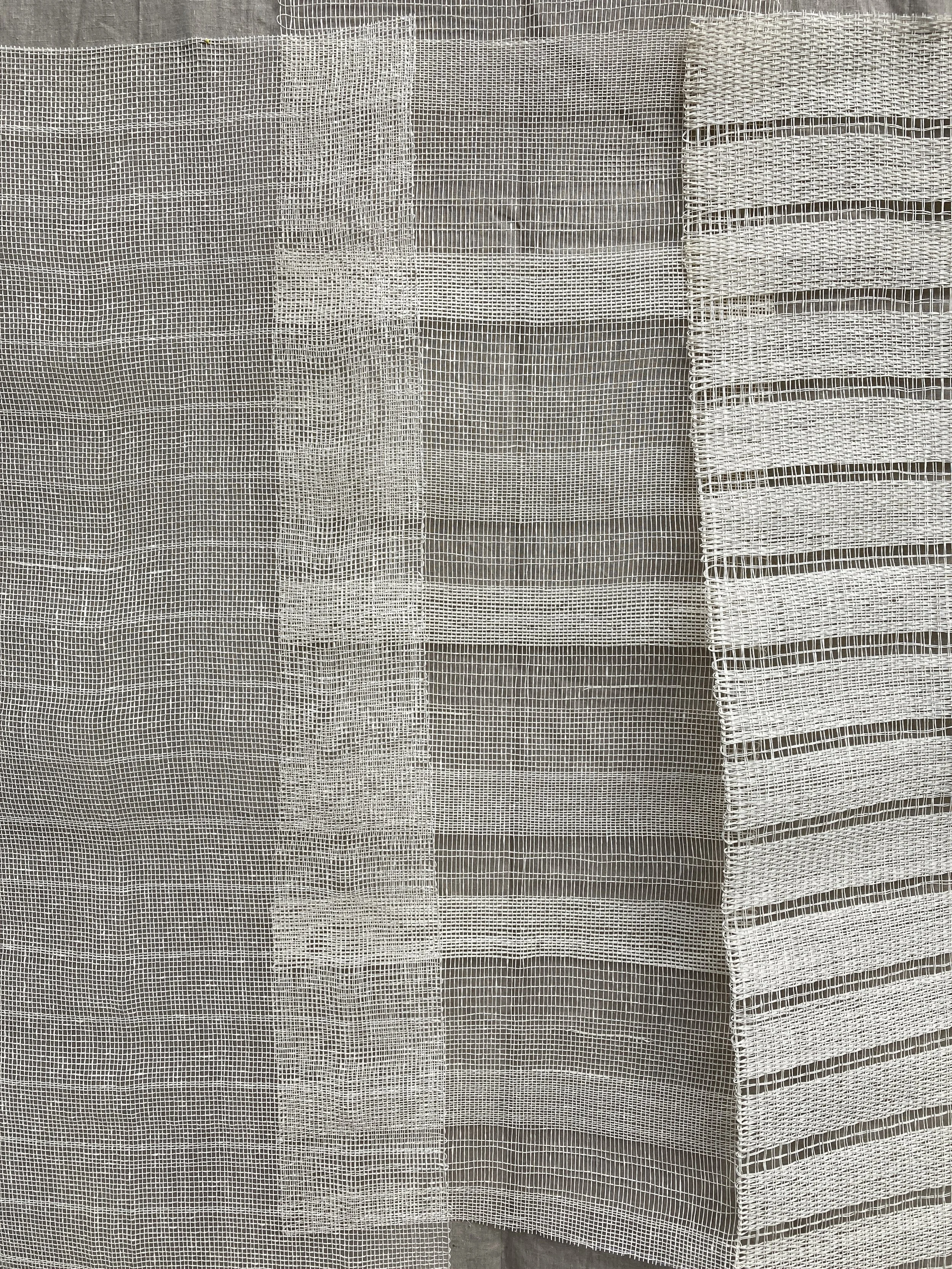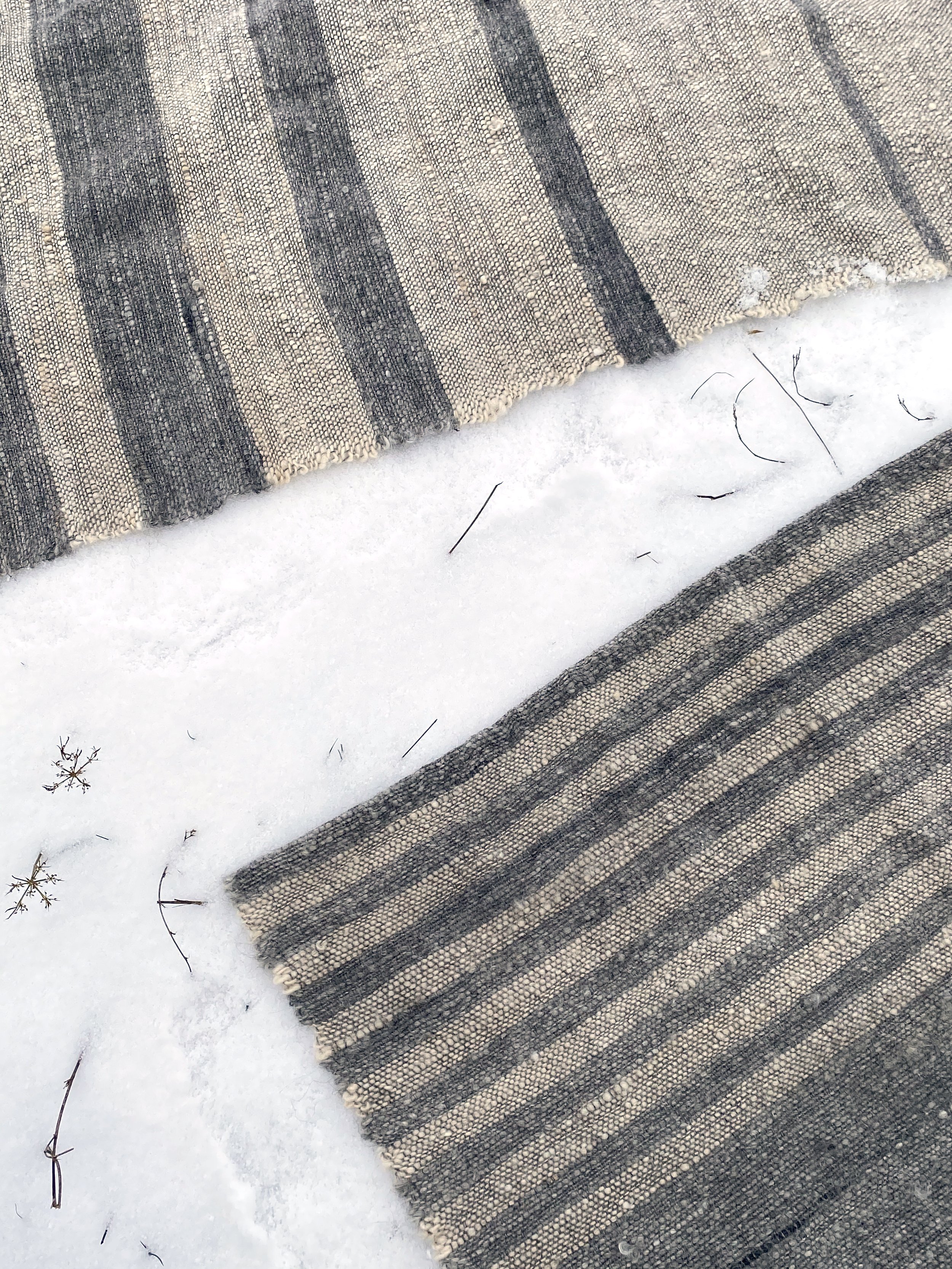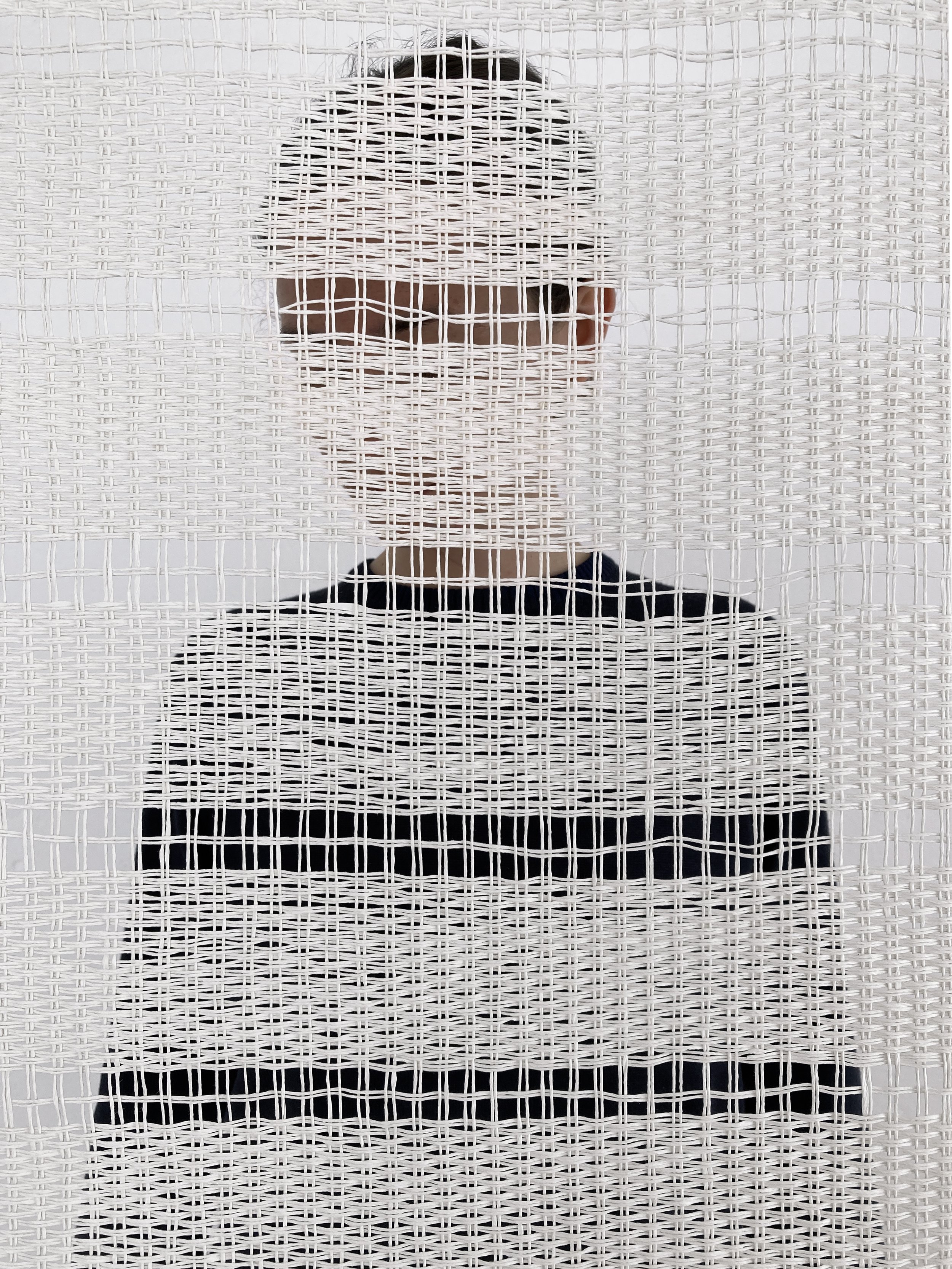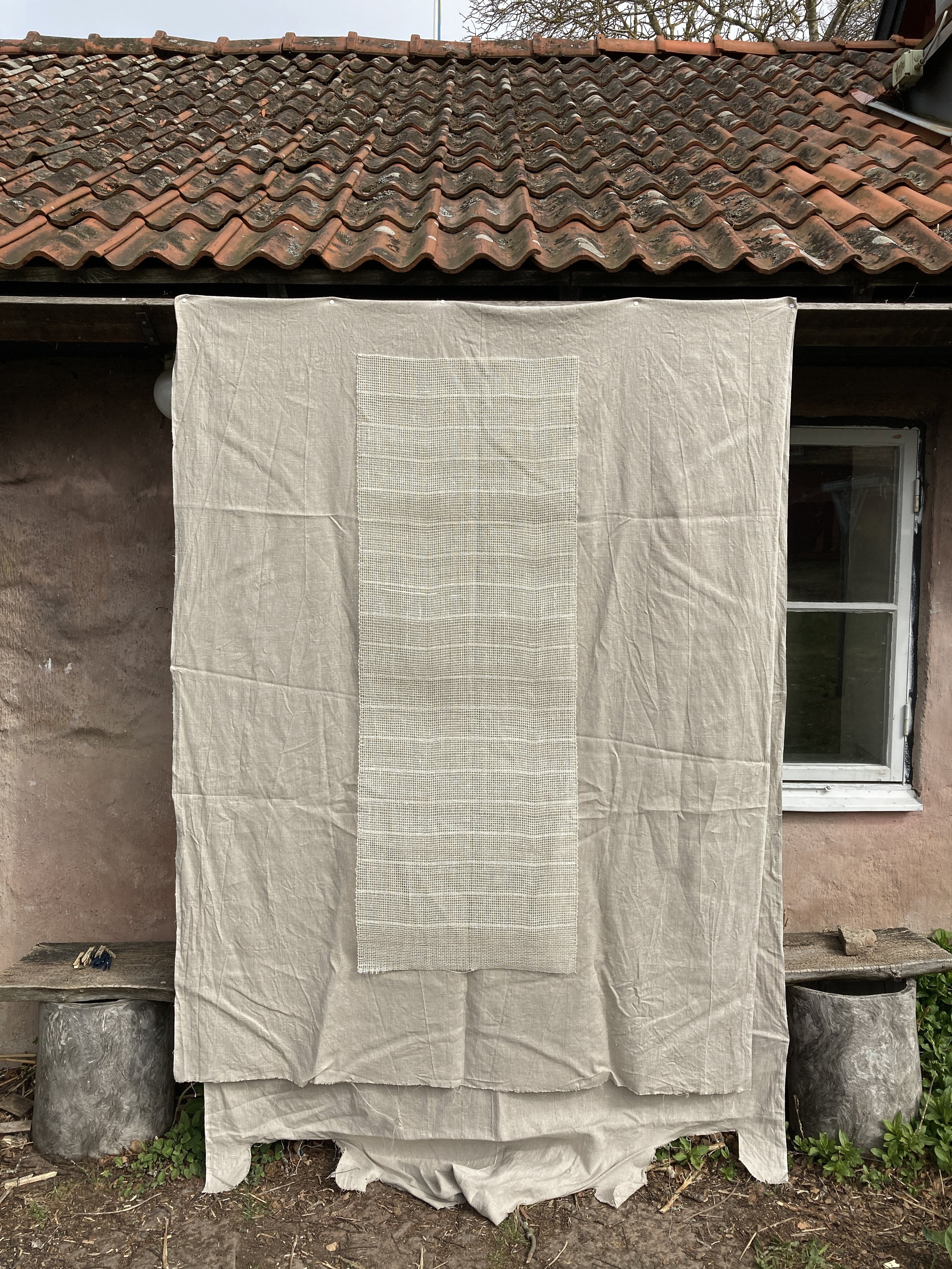ELENA meneghini,
textile DESIGNER
October, 28th 2022
ENG
Elena Meneghini is a weaver and textile designer. In 2014 she graduated in Design at the Free University of Bolzano. From 2016 to 2020 she worked as a graphic designer for the brand Fornasetti. Since 2017, together with Nicola Chemotti, she has been curating and directing Neue Serie Handdruck, a project that recounts and collects the production of screen-printed fabrics by the South Tyrolean Handdruck collective between the 1970s and 1990s. In 2020, she joined the Swedish craft school Capellagården where for two years she deepened her hand-weaving and textile practices. In 2021, together with Caroline Donaldson and Giulia Pils, she founded Dòte, a research, teaching and production space based in Milan that focuses on textile culture.
ITA
Elena Meneghini tessitrice e textile designer. Nel 2014 si laurea in Design presso la Libera Università di Bolzano. Dal 2016 al 2020 lavora come graphic designer presso il marchio milanese Fornasetti. Dal 2017, insieme a Nicola Chemotti, cura e dirige Neue Serie Handdruck, un progetto che racconta e raccoglie la produzione dei tessuti serigrafati dal collettivo altoatesino Handdruck tra gli anni Settanta e Novanta. Nel 2020 entra a far parte della scuola svedese di artigianato Capellagården dove per due anni approfondisce la tessitura a mano e le pratiche tessili. Nel 2021, insieme a Caroline Donaldson e Giulia Pils, dà vita a Dòte, uno spazio di ricerca, insegnamento e produzione con sede a Milano che si occupa di cultura tessile.
ENG
LZ: What is the relationship between the material and the technique you decide to use? Do you think one can amplify the other?
EM:My textile research is strongly inspired by the materials I choose to work with. Each fibre has its own history and nature that I try to get to know and follow. In recent years, I have followed the complete production cycle of certain yarns such as linen or wool on several occasions. Processes such as the extraction of the flax fibre from the stem of the plant or the slow carding of raw wool flocks before spinning, allow me to have an intimate contact with the material and a greater awareness in their use. Lately, I have been exploring paper yarn, discovering its unexpectedly strong soul that seems to contrast not only with the fragility that is usually attributed to such material, but also with its ultimate lightness once it becomes fabric.
IT
LZ: Quale rapporto c'è tra la materia e le tecniche di lavorazione che decidi di utilizzare? Credi una possa amplificare l'altra?
EM: La mia ricerca tessile è fortemente ispirata dai materiali con cui scelgo di lavorare. Ogni fibra ha una sua storia e una sua natura che cerco di conoscere e assecondare. Negli ultimi anni ho seguito in varie occasioni il ciclo completo di produzione di alcuni filati come il lino o la lana. Processi come l’estrazione della fibra del lino dallo stelo della pianta o lenta cardatura di fiocchi di lana greggia prima della filatura, mi permettono di avere un contatto intimo con la materia e una consapevolezza maggiore nel loro utilizzo. Ultimamente sto esplorando il filato di carta, scoprendone la sua anima inaspettatamente forte che sembra contrapporsi, non solo alla fragilità che s
ENG
LZ: In your work there is a certain interest in light and its interaction with fabric, more specifically with weave. Is this a component you study and take into account at the design stage, or is it an unexpected result of the weaving?
EM: Light and its observation are constant factors with which I dialogue and relate every day. This fascination of mine with light, particularly natural light, also transpires from my interest in the theme of the window. Windows are a threshold between private and public, sometimes impenetrable, sometimes generous and permeable. But, above all, windows are filters between the light outside and us inside. The Guardians series was born in Sweden, where light has a great influence on everyday life, depending on the seasons, but also depending on the wind. I find that this element of unpredictability played by light in the everyday allows for a renewed look at the things around us, including textiles. If weaving is rigour and precision, light is the perfect uncontrolled element that reinterprets my work in its own way, surprising me every time.
IT
LZ: Nel tuo lavoro si denota un certo interesse per la luce e la sua interazione con il tessuto, più nello specifico con l'intreccio. È una componente che studi e di cui tieni conto in fase di progettazione, o è un risultato inaspettato della tessitura?
EM: La luce e la sua osservazione sono fattori costanti con cui dialogo e mi relaziono ogni giorno. Questa mia fascinazione verso la luce , in particolare quella naturale , trapela anche nel mio interesse verso il tema della finestra. Le finestre sono una soglia tra privato e pubblico, talvolta impenetrabili, talaltra generose e permeabili. Ma, prima di tutto, le finestre sono filtri che si frappongono tra la luce fuori e noi dentro. La serie Guardians nasce in Svezia, dove la luce ha una grande influenza sulla quotidianità, in base alle stagioni, ma anche in base al vento. Trovo che questo elemento di imprevedibilità giocato dalla luce nel quotidiano permetta di rinnovare lo sguardo verso le cose intorno, compresi i tessuti. Se la tessitura è rigore e precisione, la luce è il perfetto elemento incontrollato che reinterpreta a modo suo il mio lavoro, sorprendendomi ogni volta.
ENG
LZ: Do you ever think about how the final piece of work and the environment that will host it will meet, perhaps winking at interior design?
EM: Often my work starts from a story, a specific environment, a room in the house or a client's request. In my practice, the place comes first and then the product. I like to observe - sometimes actually spy on - spaces and the role played by textiles within them. I also like to think that my productions inhabit places that are already inhabited and interact with new routines. Indeed, in addition to and together with light, the host environment has a strong influence on the perception of a textile.
IT
LZ: Pensi mai a come si incontreranno l'opera finita e l'ambiente che la ospiterà, magari strizzando l'occhio all'interior design?
EM: Spesso il mio lavoro parte da una storia, da un’ambiente specifico, da una stanza della casa o da una richiesta di un committente. Nella mia pratica nasce prima il luogo e poi il prodotto. Mi piace osservare – talvolta proprio spiare – gli spazi e il ruolo giocato dai tessuti al loro interno. Mi piace anche pensare che le mie produzioni abitino luoghi già abitati e interagiscano con routine nuove. Effettivamente, oltre alla luce e insieme a essa, l’ambiente ospitante ha un forte peso sulla percezione di un tessuto.









